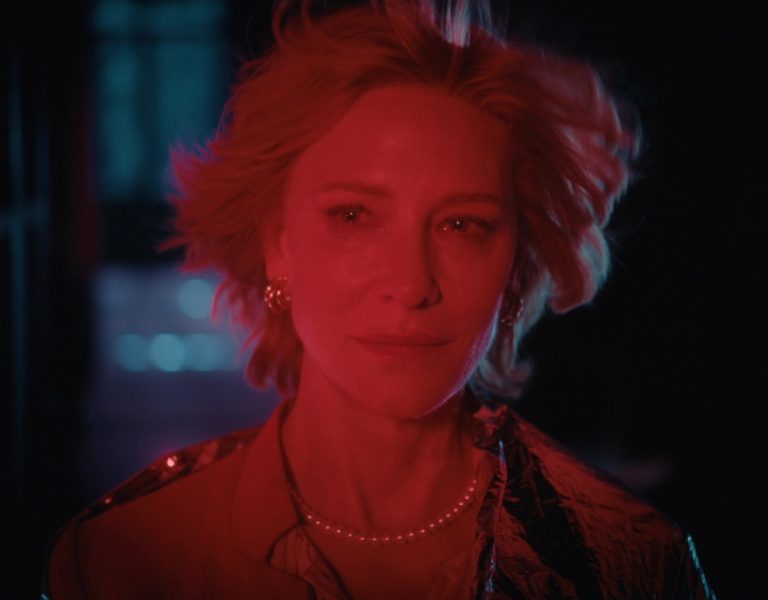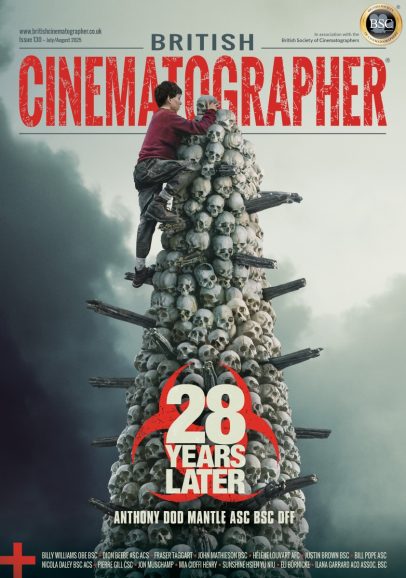FRAMING GRIEF
Production name: Him Then Us
Production type: Short film
Cinematographer: Sarah Tehranian
Director: Elika Norowzian
Overview of production and the visual approach you adopted: Him Then Us was an ambitious short, half shot in gritty urban London, half in the vast mountains of the Yorkshire Dales. This shift mirrored the emotional journey of three characters travelling north while processing personal grief. The film set out to capture the raw, erratic reality of young people navigating loss.
We used the move from dark to light settings to show their emotional turbulence. Inside the car, we embraced claustrophobia and the monotonous flicker of motorway lights. Creating active dark frames was challenging, but we leaned into naturally occurring rhythms, reflecting the shifting inner states of the characters.
Lens(es) used: Leitz ELSIE lenses (1ti, 29, 40, 50, 75, 100mm)
Lenses supplied by: Leitz UK, via Sunbelt Rentals (while they were still based at Pinewood Studios, prior to their move to Wembley).
Camera used: Leitz sponsored us, providing the Leica SL2-S camera and ELSIE lens kit. Our budget was tight, and other options would have caused more problems. The SL2-S gave me the flexibility to shoot handheld inside a small car and navigate fast-moving days in the Yorkshire Dales.
I have a personal connection with Leica, dating back to my homeland, Iran. A family member worked as a private photographer for the Shah, using a golden Leica. As a teenager, I dreamed of owning one. When the SL2-S was released, it felt like the perfect moment to finally shoot with a Leica—a dream come true!
Look you needed to achieve: Our story is deeply personal, and I felt the lens choice needed to reflect that. I wanted lenses that would highlight the emotional journey of three characters in varied environments—interiors and exteriors, dark and bright scenes, and intimate car interiors versus the vast Yorkshire landscapes.
I was looking for neutral lenses—minimal focus falloff, low distortion, and no distracting breathing. The ELSIE series offered all of that. They were warm, soft, and beautiful to handle—cinematically rich, yet restrained.
Lens testing process: You don’t know what you don’t know. I kept testing, trusting that I would find the right lens—one with smooth skin tones, a warm palette, and neutral rendering.
We tried Zeiss Ultra Primes—excellent lenses, but too familiar. Schneider Cine Xenon lenses from the 1960s had a beautiful vintage look, but not right for our film. Then I met Rainer Hercher from Leitz at BSC Operators Night. He suggested trying Leica R-Cine lenses.
The director, Elika Norowzian, and I tested them the following week. The skin tones were stunning, but the lenses leaned too far into the stills-photography look, with visible distortion in the car interiors.
At the BSC Expo, I finally tested the ELSIE series—and it clicked. The lenses rendered colour and exposure beautifully. The 1timm lens had low distortion even at close distances in the car, and its build held up well in the unpredictable Yorkshire Dales. I immediately fell in love with the warm look and smooth focus pull.
Why the lenses was the most appropriate: Beyond the technical qualities that made the ELSIE series perfect for our story, the lenses carry a powerful legacy.
The series is named after Elsie Kühn-Leitz, the daughter of Ernst Leitz II. She was a humanitarian who risked her life during WWII to help those in need. She helped smuggle employees and citizens out of Nazi Germany and was imprisoned for aiding Ukrainian forced labourers. After the war, she dedicated her life to humanitarian efforts.
Knowing that history gave the lenses added meaning. In today’s world, I believe it’s more important than ever to make thoughtful, informed choices about the products we use. Technical specs are essential—but a lens with a story and legacy carries a different kind of weight. In an industry full of options, few tools feel this personal.
Explanation of lensing techniques used:
Our story follows three boys dealing with grief after losing a close friend. Their emotional journeys unfold separately—sometimes in confined spaces like a car, and other times in open landscapes, running down hills or arguing by a wind turbine.
I wanted to get close to the characters, using wide close-ups that captured both their emotional expressions and the space around them. I rarely used the 75mm or 100mm lenses for this reason.
Inside the car, I was often just a breath away from the actors with the 1timm lens—an uncomfortable position for both them and me, but necessary to convey the claustrophobia. The 1timm gave me just the right perspective without distorting faces.
In one scene, I used the DZOFILM Vespid Prime 12mm T2.ti mounted inside the car to show all three boys trapped in traffic, devastated. The lens’s distortion suited the moment perfectly.
Out in the Yorkshire Dales, I returned to the 18mm to show the characters’ smallness amidst the vastness of nature. For close-ups, I used the 40mm and 50mm to create clean and dirty frames with one or two characters.
Filters used (if applicable): I used a variety of filters to enhance both night car scenes and the transition from night to dawn in the landscapes. My approach is intuitive—like making a curry: I mix based on feel.
For the night driving scenes, we had to make the presence of passing lights more visible, especially on pitch black roads. I used Schneider Streak Filters (Blue, Green, Clear), which allowed me to exaggerate light sources like street lamps and brake lights. Being able to rotate and switch them quickly was a huge advantage.
For exterior scenes, we used a combination of Variable NDs, Rotating Polarizers, and Tiffen Pro-Mists, matched with Tiffen Warm/Cool VND filters. My ACs were constantly swapping filters throughout our five-day shoot. I prefer to achieve my look in-camera, and this was my way of “painting” each shot based on light and location.
Challenges faced and how they were overcome: The biggest challenge during night shoots was darkness on rural roads. Gaffer TC Thomas and spark Chiara Fulgoni rigged DMG LED lights inside and outside the car, controlled wirelessly to simulate passing traffic. These were enhanced by the Streak Filters to create expressive flares.
For exteriors, we battled wild weather—hail, sun, fog, and heavy winds, all courtesy of Storm Bernard. Light was constantly changing, and rain would arrive out of nowhere. We started recording our dawn scene early, which saved us later in post. I later read that spring dawns in high latitudes are among the most unstable weather windows. Lesson learned: next time I’ll hire a meteorologist!
Anything else to add? Lensing is an extension of your lighting approach. Make sure you understand your conditions before choosing a lens—consider ergonomics, weather resistance, and how much crew support you’ll have. Every detail matters, especially on small sets with limited resources. Him Then Us was an incredible film to have worked on, it was a privilege to work with a camera and set of lenses that married so well to our very intimate but expansive storyline. Telling a story of grief is not easy, it is simultaneously personal and universal and I’m very grateful our lenses adapted to that complicated task.
Lens lessons this production taught you: Testing is your best friend. Keep testing until you find the lens that speaks your visual language—regardless of what others are using. Tone, contrast, texture, and storytelling must align with your lens choice. Only then does the lens become a true creative partner.






















